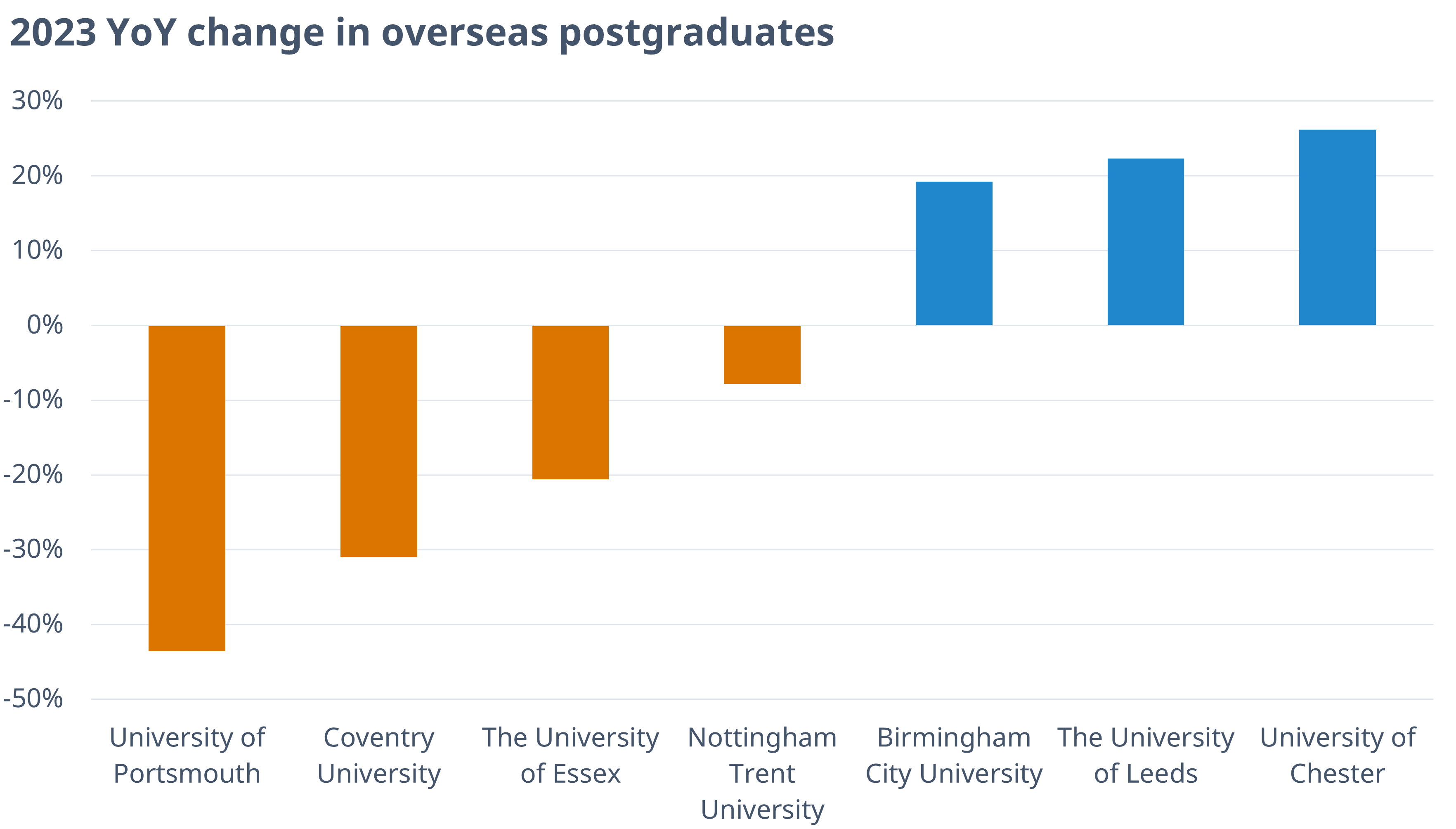
Exploring the Office for Students Early Survey Data

Given the ongoing delays to the release of HESA's Higher Education Student Data for 2022-23, the StuRents Research team has been exploring the Office for Students' early statistics survey data.
This data is submitted by higher education providers 'to give an early indication of the number of students studying in each academic year'. So whilst these figures aren't final, they do reveal interesting trends at both a national and institutional level.
Key findings:
- Change in both undergraduate and postgraduate student numbers varies widely among universities.
- The University of Leeds has seen a significant increase in overseas undergraduates, while domestic undergraduate numbers at Coventry University have fallen rapidly.
- Even within the same university, undergraduate vs postgraduate change can be starkly opposed.
- The recent period of consistent overseas postgraduate growth may be coming to an end, with a 5.2% decrease year-on-year in 2023.
Source: Office for Students
Looking at the change in 'home fee' (OFS term for domestic) undergraduate numbers since 2018, we can see a wide range of patterns between institutions. Birmingham City University has maintained steady growth since 2018, whilst the University of Leeds has been steady in its decline - after a small recovery in 2020.
Nottingham Trent University's numbers have been in decline for the past couple of years, after experiencing significant growth, with numbers peaking in 2021. The tough market for PBSA operators in Coventry is well reported, and the steep decline shown here, after two years of relative stability in 2019 and 2020, may go some way to explaining it.
Source: Office for Students
Looking at the change in overseas undergraduates since 2018, Nottingham Trent has seen consistent growth, whilst Birmingham City and Coventry University have almost identical fluctuating growth patterns.
It's interesting to see that the University of Leeds has experienced a large increase here, counteracting its decrease in home fee undergraduates discussed above. Given the inflationary pressures faced by universities and the freezing of tuition fees for around a decade, universities will certainly be incentivised to recruit a greater number of international students given the higher fees overseas students pay.
Source: Office for Students
Switching our attention to postgraduates, at a national level the number of home fee postgraduates has decreased since 2018, after an increase peaking in 2020. Meanwhile, overseas postgraduates saw huge growth post-Covid, however, the plateauing in 2023 shown here may indicate this period of growth is coming to an end.
The lack of growth reported in 2023 can be partly attributed to recent changes to visa rules, where dependants of overseas students can only apply for UK entry if the overseas student is studying on a postgraduate research programme visa. We have seen big drops in visas issued to Indian and Nigerian students, which is especially noteworthy given a lot of the postgraduate growth came from Indian students in recent years.
Source: Office for Students
Whilst at a national level overseas postgraduate numbers remained fairly constant year-on-year in 2023, variance at an institutional level is high. The University of Portsmouth, Coventry University and the University of Essex have all seen significant drops year-on-year. Interestingly, whilst Nottingham Trent has seen an increase in overseas undergraduates, their overseas postgraduate numbers have shrunk.
On the other end of the spectrum, institutions such as Birmingham City, the University of Leeds and the University of Chester have all seen significant increases in 2023.
The latest data from the Office for Students highlights the volatility in recruitment in recent years. Nationally, demand for UK higher education remains buoyant, but these insights illustrate how quickly the demand profile at specific institutions can change, with ramifications for both investors and operators alike.
Share





